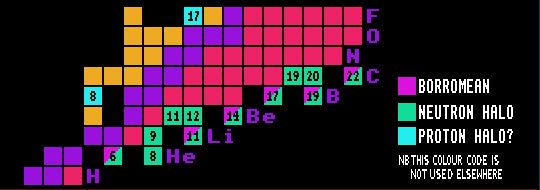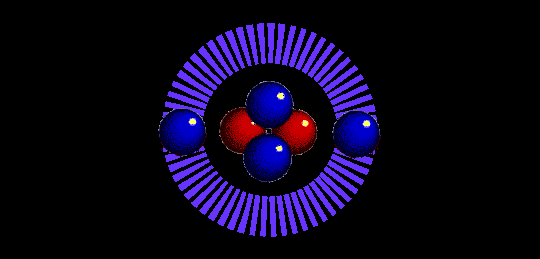

By Heisenbergs' Uncertainty Principle, the halo neutrons are able to borrow a small extra energy to enable them to remain at long distances from the nucleus for a longish time, thus producing the halo. Lithium-11 is a halo nucleus that consists of a lithium-9 core surrounded by a halo of 2 loosely bound neutrons requiring just 0.3MeV to remove them and is so large as to be similar in size to calcium-48. (This compares to the average 8MeV per nucleon for unconditionally stable nuclei). Other halo nuclei are helium-6 (He-4 + 2n), helium-8 (He-4 + 4n), beryllium-11 (Be-10 + 1n), beryllium-14, boron-17 and the heaviest yet discovered carbon-19. The extra four neutrons in helium-8 are bound fairly closely to the surface forming a neutron skin rather than a neutron halo. See TetraNeutrons. Proton halos may also exist for nuclei near the proton dripline; boron-8, nitrogen-13 and fluorine-17 being strong candidates with possible single-proton halos.

N.B. All Borromean nuclei are also neutron halo nuclei.
![]()
![]()